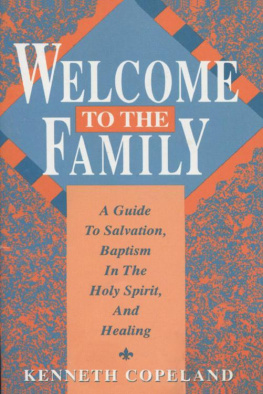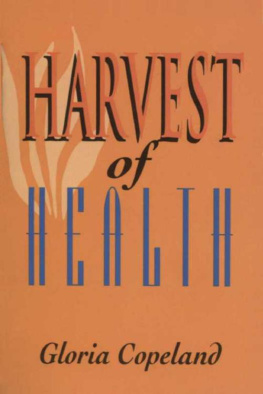African American Adult Male Head of Households
Where Are They?
Dr. Jim H. Copeland Jr.
Copyright 2020 by Dr. Jim H. Copeland Jr.
All rights reserved. No part of this publication may be reproduced, distributed, or transmitted in any form or by any means, including photocopying, recording, or other electronic or mechanical methods without the prior written permission of the publisher. For permission requests, solicit the publisher via the address below.
Christian Faith Publishing, Inc.
832 Park Avenue
Meadville, PA 16335
www.christianfaithpublishing.com
Printed in the United States of America
Table of Contents
Chapter 1
R esearch indicates that the African American adult males encounter many challenges to their personal view of themselves. This includes a lack of education (Heckman 2011), underemployment, and unemployment (Ritter and Taylor 2011). Additionally, African American adult males experience a high rate of incarceration, alcoholism, and drug use (Holzer, Offner, and Sorensen 2005; Barton, Kogan, Cho, and Brown 2015). This population present with low self-esteem (Warren-Findlow, Seymour, Brunner, and Larissa 2012) and crime involvement (Lofquist et al. 2012) as well. Many African American adult males had few positive male role models and often endured fatherlessness as well (Heckman 2011; Kogan, Yu, and Brown 2016).
Background
The African American adult males role as a provider and protector has not changed over the years (Heckman 2011). African American families are facing increasing fatherlessness and a decline in the continuity of the African American home (Hudson, Neighbors, Geronimus, and Jackson 2012). The African American adult male, because of the moral decay within the African American community, has changed his view of himself as the head of the household (Abrams, Maxwell, and Belgrave 2017). Social media coupled with poor role models have left African American adult males with little guidance or direction and poor self-esteem (Fathers Rights 2013; Kogan et al. 2016). Often, young African American males are identifying their manhood through their procreation outside of marriage. These actions result in the continued and increasing rise in young unwed mothers and teenage pregnancies (Kogan et al. 2016). This perception of themselves, women, and the family unit adds to societys poor social viewpoint of African American adult males. Continued maladaptive behaviors often lead to criminal activity as well (Barton et al. 2015). Research concludes that one in four African American males are incarcerated, and this number is increasing (Barton et al. 2015). Additionally, the national divorce rate for all ethnic groups remains at around 47 percent in the United States while the divorce rate for African Americans is 50 percent. The divorce rate for African American families is indicative of the breakdown of the family unit (Heckman 2011).
There has been an increase in African American adult males who are interested in maintaining contact with their children, therefore assuming their role as fathers (Kogan et al. 2016). This is in part due to the encouragement of the biological mothers, family members, and the legal system. Unfortunately, this increase in interest is limited to visits on some weekends or during the summer months (Adkison-Johnson, Terpstra, Burgos, and Payne 2016). Those fathers who have an interest in parenting (Richardson and Van Brakle 2013) and nurturing their children often do not state the true reason for their initial separation or departure from their offspring (Varga and Gee 2017).
African American Absenteeism as a Complex Social Phenomenon
In-depth understanding of absenteeism in the context of family relations seems impossible without presenting a brief insight into absenteeism as a general concept. Overall, since the nineteenth century, the term absenteeism has been traditionally treated as an indicator of poor individual performance (Unger 2007, p. 110). Absenteeism is a failure to appear at work or inability to perform another regular duty owing to ones own absence. In organizational terms, absenteeism is a management problem reflecting a breach of an implicit contract between employees and their employers (Unger 2007).
It is reasonable to admit that absenteeism is frequently viewed as a negative phenomenon reflecting a failure in a certain organization. As Bianchi, Casper, and King (2005) implied, absenteeism can be understood not only as an employees non-presence at the workplace, but also as a physical or financial absence of a family member within a family structure. According to Greene (2011), each family should be treated as an organization or a structure in which the presence of all components is essential. Bellamy, Thullen and Hans (2015) added that if a family is treated as a social organization with its own homeostasis, absenteeism reflects a failure or imbalance in an organizational structure.
The topic-related literature suggests that the so-called presenteeism is significant for well-being of a family as a social organization. Donnellan and Jack (2009) defined presenteeism as a phenomenon opposite to absenteeism or a positive concept reflecting ones presence at a given setting for performing corresponding duties (p. 114). Doyle, Pecukonis and Lindsey (2015) revealed that a family can be viewed as a social organization in which each parent has his or her social roles and responsibilities. These responsibilities are difficult to replace by another family member. In the context of a traditional family, a fathers role is usually assumed by a male who assumes the position as a family head, while a mothers role belongs to a person who performs the functions of manager-treasurer of the household. The eldest of the children may assume the parental role only in the case when a father or a mother is away from home (Richardson and Van Brakle 2013). Besides, both parents are supposed to take care of their children, to take part in their education, to ensure their good health, etc. (Williams, Banerjee, Lozada-Smith, Lambouths, and Rowley 2017). Presence of both mother and father in a family structure is paramount for the normal family functioning.
However, the significance of male members for a family is determined not only by a patriarchal culture, but also by Attachment Theory. According to Varga and Gee (2017), focusing on the effects of early bonding between children and their caregivers, this theory implies that emotional attachment to a father plays a significant role in offsprings normal individual development. According to Threlfall and Kohl (2015), a parent-child interaction is vital, since it provides children with essential behavioral models to be copied in adult life, influences the formation of significant traits of character and plays an indispensable educational role, etc. Correspondingly, the absence of a childs emotional attachment is likely to make childrens development abnormal (Richardson and Van Brakle 2013). Overall, based on the information presented above, one may agree that in the context of family relations, male absenteeism is characterized as a negative rather than positive phenomenon.












